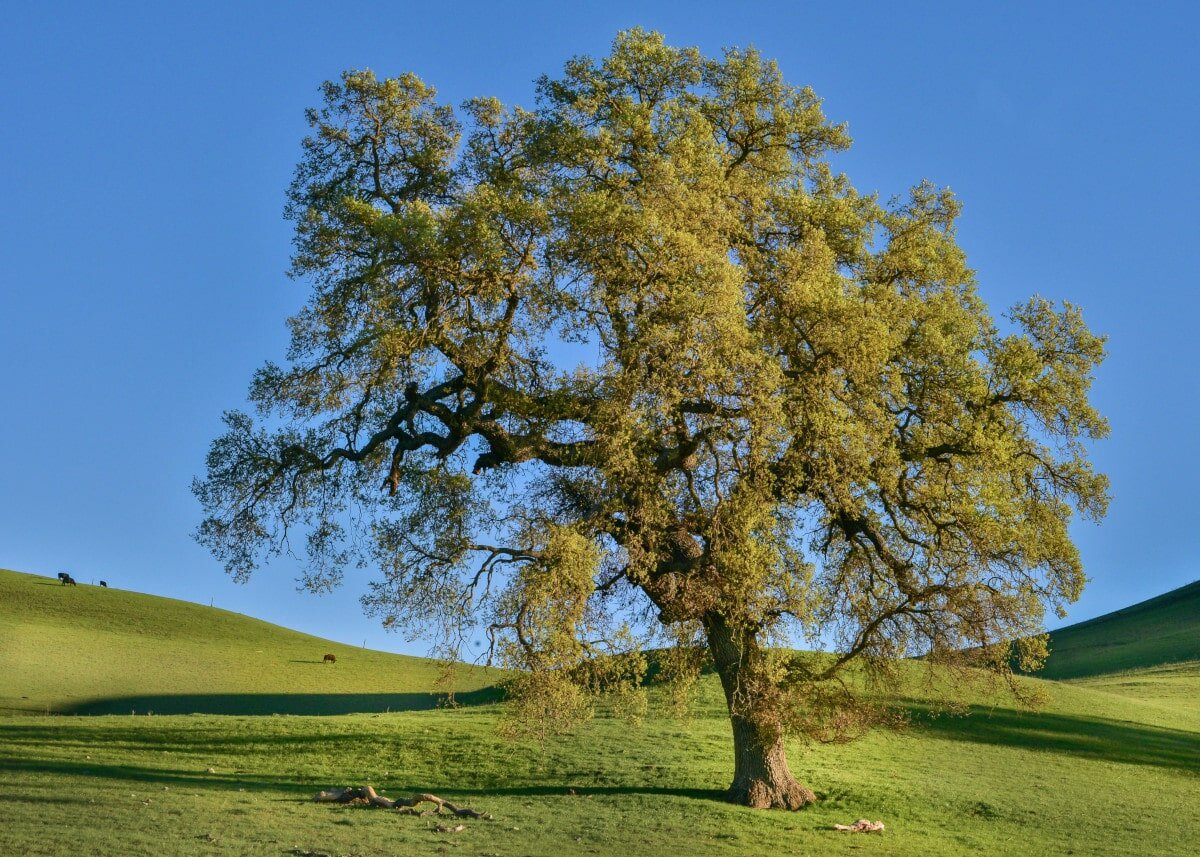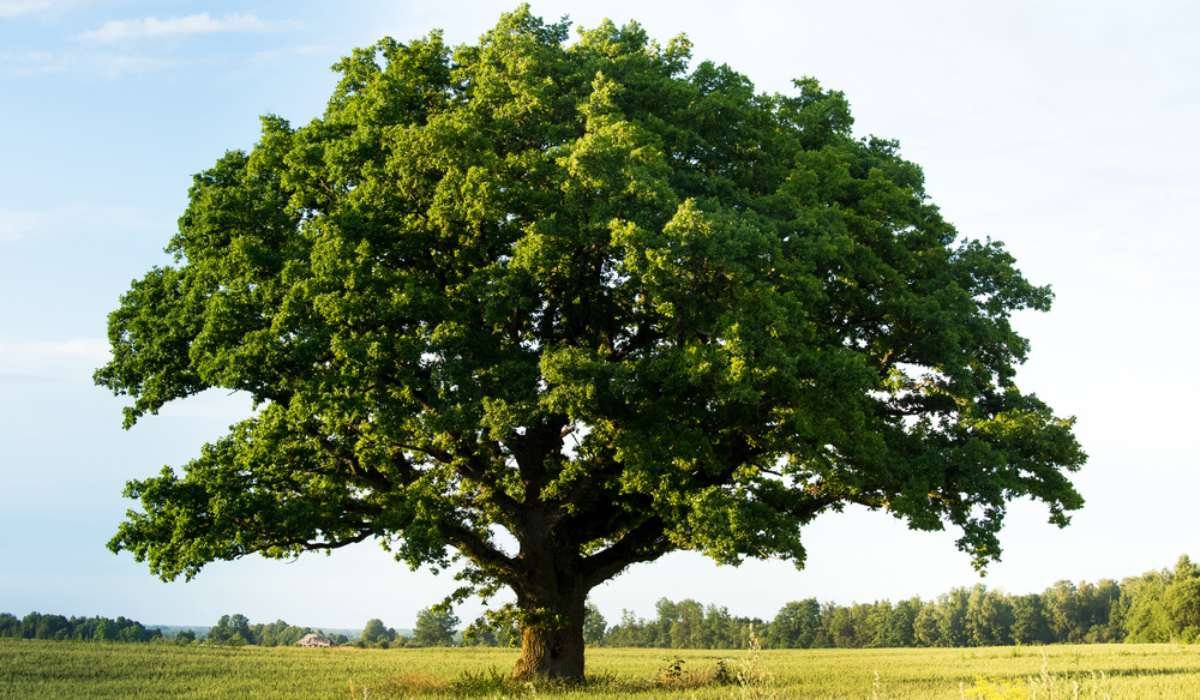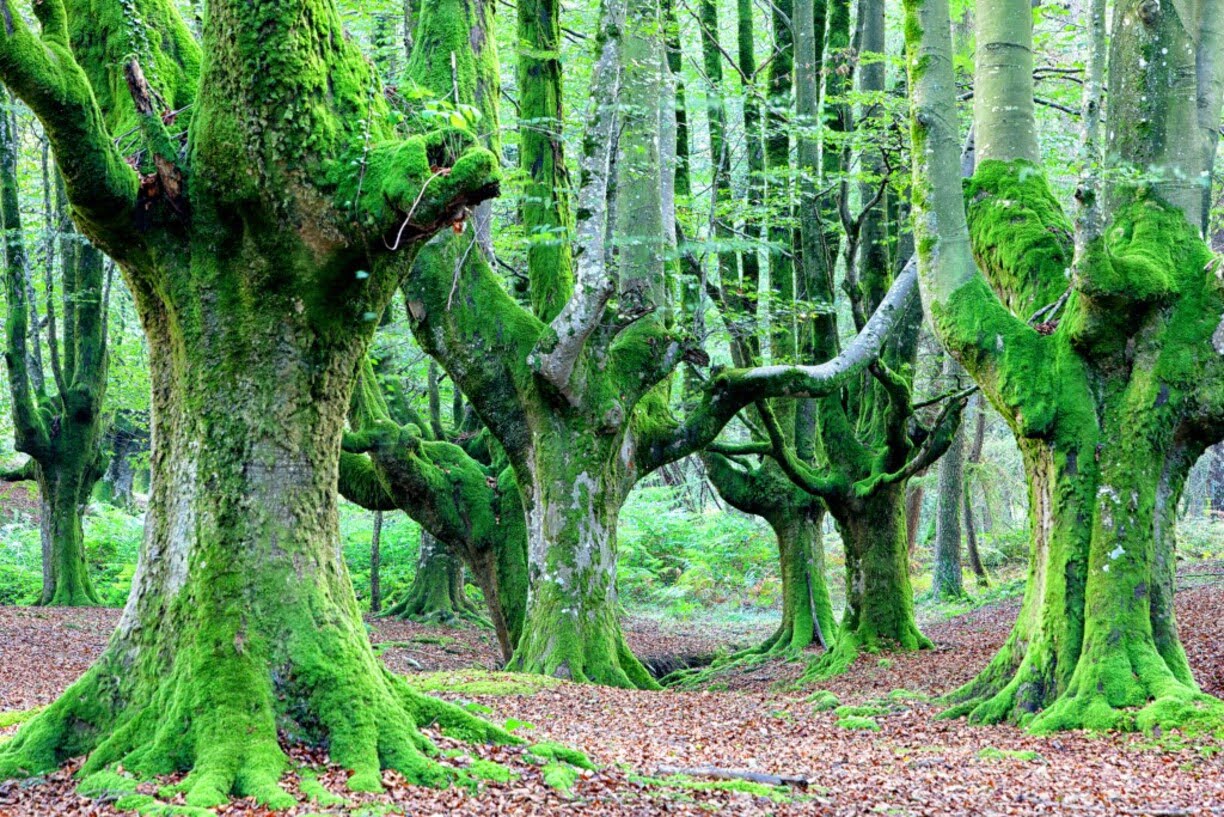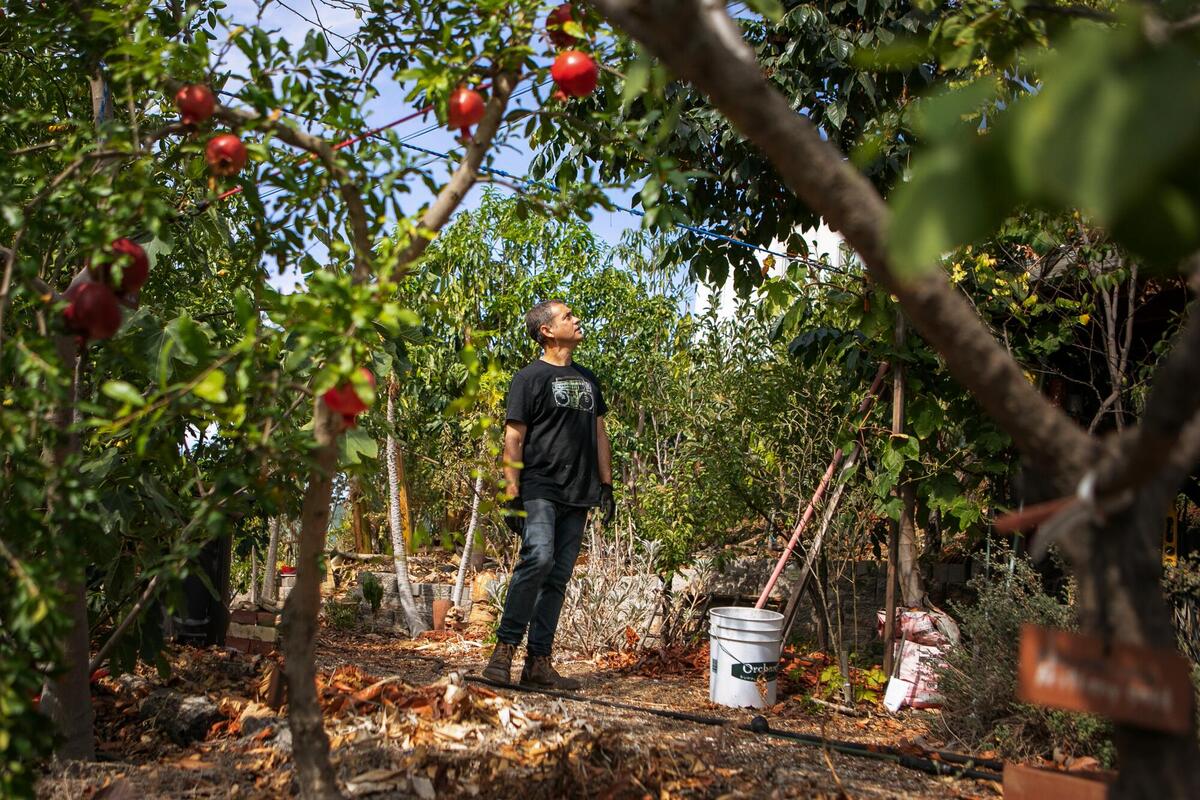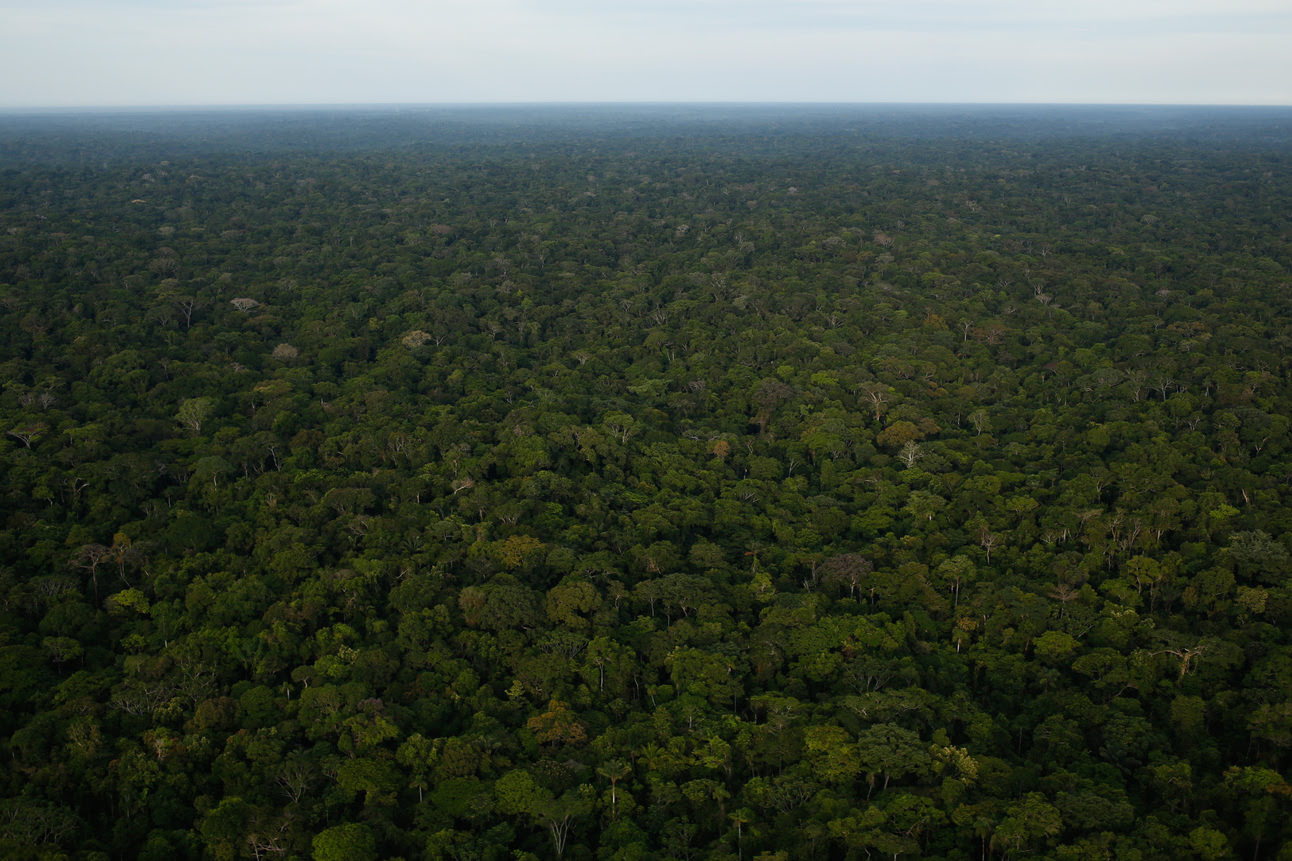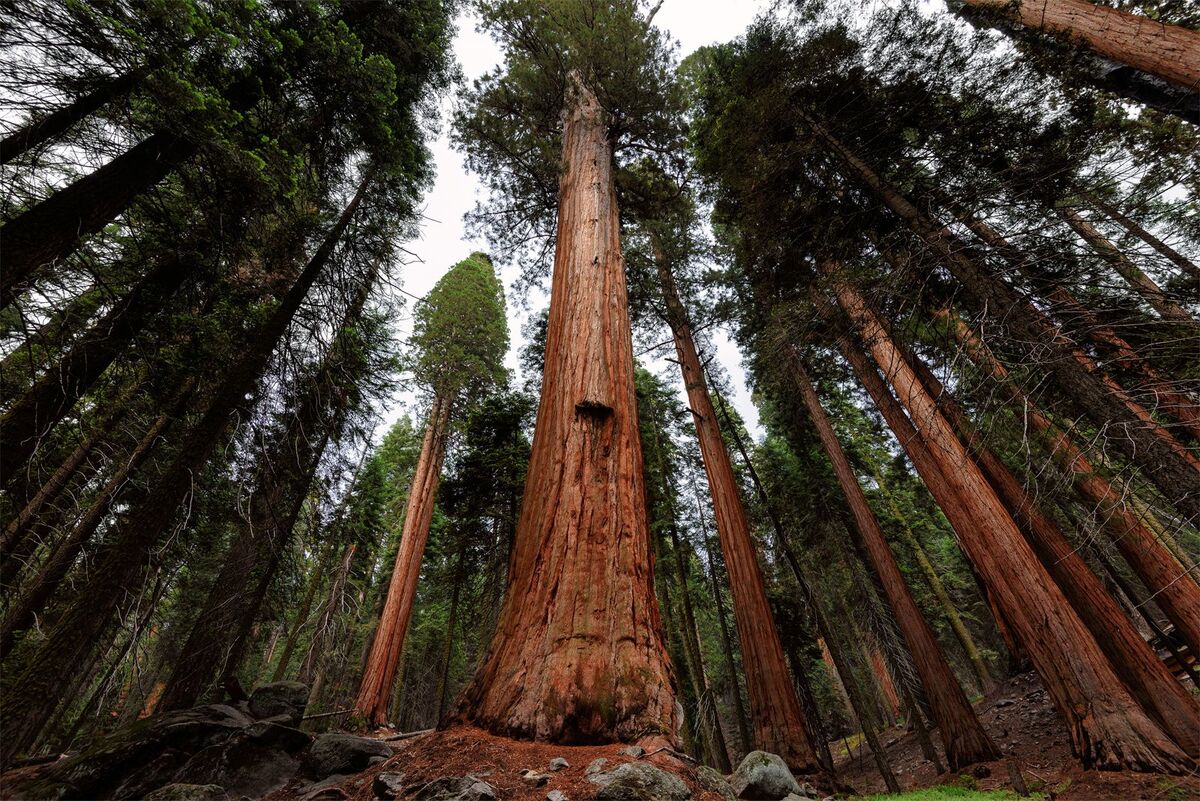Home>Gardening News and Trends>Latest News>How Many Trees Get Cut Down A Day


Latest News
How Many Trees Get Cut Down A Day
Modified: January 22, 2024
Stay informed with the latest news on tree deforestation. Discover how many trees are cut down each day and the impact it has on our environment.
(Many of the links in this article redirect to a specific reviewed product. Your purchase of these products through affiliate links helps to generate commission for Chicagolandgardening.com, at no extra cost. Learn more)
Table of Contents
Introduction
Deforestation is a global crisis that continues to threaten our planet’s ecosystems. Each day, countless trees are cut down, further exacerbating the ecological impact of deforestation. The loss of trees not only disrupts the delicate balance of the natural world, but also poses significant threats to biodiversity and contributes to climate change.
Trees play a vital role in our environment. They help purify the air we breathe by absorbing carbon dioxide and releasing oxygen through the process of photosynthesis. Additionally, trees provide a habitat for countless species of plants and animals. They help regulate local climate, prevent soil erosion, and maintain the water cycle. In essence, trees are the lungs of our planet, and the continued destruction of forests puts the future of our planet at risk.
Deforestation is driven by a multitude of factors, including agricultural expansion, urbanization, illegal logging, and the demand for timber and other wood products. The logging industry, in particular, plays a significant role in tree cutting rates, as commercial logging operations continue to exploit forests for profit.
Understanding the magnitude of deforestation requires quantifying the number of trees cut down on a daily basis. While it is challenging to obtain exact figures due to the vastness of the issue and the lack of comprehensive data, estimates indicate that a staggering number of trees are lost each day.
In this article, we will delve into the impacts of deforestation, explore the factors that drive the destruction of trees, quantify the number of trees cut down daily, and discuss the efforts and solutions to combat deforestation. By raising awareness about this pressing issue and encouraging action, we can collectively work towards preserving our forests and ensuring a sustainable future for generations to come.
Deforestation: A Global Crisis
Deforestation is an alarming global crisis that poses significant threats to the health of our planet. It refers to the deliberate or unintentional removal of trees and vegetation, leading to the degradation or complete destruction of forests. This widespread destruction of forests has far-reaching consequences for both the environment and human well-being.
The world’s forests are invaluable ecosystems that support a diverse range of plant and animal species. They are also major carbon sinks, absorbing large amounts of carbon dioxide and helping mitigate the effects of climate change. The loss of forests, therefore, contributes significantly to the increasing levels of greenhouse gases in the atmosphere, leading to a rise in global temperatures and detrimental impacts on weather patterns.
Deforestation is often driven by economic factors, such as the expansion of agricultural land for crop cultivation or livestock grazing. Large-scale commercial logging operations and the demand for timber and wood products also play a significant role in forest destruction. Additionally, urbanization, mining activities, and infrastructure development further contribute to deforestation.
The consequences of deforestation are manifold. Loss of habitat is one of the most immediate and severe impacts, causing the displacement and endangerment of countless plant and animal species. Deforestation also disrupts the delicate balance of ecosystems, leading to a loss of biodiversity and the potential collapse of entire ecosystems.
Moreover, deforestation has direct implications for climate change. The destruction of trees eliminates a vital carbon sink, allowing greenhouse gases to accumulate in the atmosphere. This, in turn, intensifies the greenhouse effect and contributes to the warming of the planet. Additionally, deforestation disrupts local weather patterns, leading to increased vulnerability to natural disasters such as floods, landslides, and droughts.
Furthermore, deforestation has negative social and economic impacts, particularly for indigenous communities and rural populations who depend on forests for their livelihoods. Forests provide vital resources such as food, medicine, and fuel, and their destruction often results in the displacement and impoverishment of these communities.
The gravity of the deforestation crisis calls for immediate action. Efforts must be made on a global scale to protect and conserve forests, promote sustainable land use practices, and adopt alternative methods of development that prioritize environmental preservation. By recognizing the importance of forests and taking proactive steps towards their conservation, we can mitigate the devastating effects of deforestation and safeguard the future of our planet.
The Importance of Trees
Trees are not just essential for the health and beauty of our planet; they are integral to the survival of all living beings. Trees offer a wide range of benefits and play a crucial role in maintaining the balance of our ecosystems. From providing oxygen to regulating the climate, their importance cannot be overstated.
One of the primary functions of trees is their role as the Earth’s natural air purifiers. Through the process of photosynthesis, trees absorb carbon dioxide and release oxygen, helping to replenish the atmosphere with clean, breathable air. In fact, it is estimated that one mature tree can provide enough oxygen for two to ten people every year.
Trees also play a crucial role in mitigating climate change. They act as carbon sinks, absorbing and storing carbon dioxide, a greenhouse gas that contributes to global warming. By reducing the amount of carbon dioxide in the atmosphere, trees help to regulate the Earth’s temperature and combat climate change.
In addition to their impact on the atmosphere, trees have a significant influence on local climate and weather patterns. They provide shade, which helps to cool the surrounding environment and reduce the need for energy-consuming air conditioning. Trees also release water vapor into the air through a process called transpiration, which helps to humidify the atmosphere and regulate local temperatures.
The presence of trees is crucial for maintaining soil health and preventing erosion. Their roots anchor the soil, preventing it from being washed away by rain or blown away by strong winds. Trees also play a vital role in retaining water in the ground, which helps to replenish groundwater supplies and maintain a stable water cycle.
The importance of trees extends beyond their environmental impact; they also provide habitat and sustenance for countless species of animals and plants. Forests are biodiversity hotspots, housing a vast array of flora and fauna. Trees provide food, shelter, and nesting sites for various species, contributing to the overall balance and resilience of ecosystems.
Moreover, trees have a significant social and psychological impact on people. Being in the presence of trees has been shown to reduce stress, improve mental well-being, and enhance overall quality of life. They create a sense of tranquility and connection with nature that is essential for human health and happiness.
Recognizing the importance and value of trees is crucial for sustainable and responsible environmental stewardship. By protecting and preserving the world’s forests, we can reap the numerous benefits they provide and ensure a healthier, more sustainable future for generations to come.
Factors Driving Deforestation
Deforestation is a complex issue with a multitude of factors contributing to its rampant occurrence across the globe. While deforestation can be attributed to various causes, there are several key driving forces that are particularly significant.
1. Agriculture Expansion: One of the primary drivers of deforestation is the expansion of agricultural activities, particularly for cash crops and livestock farming. As the global population continues to grow, the demand for food increases, leading to the conversion of forests into agricultural land. Large-scale commercial agriculture, including palm oil plantations, soybean farms, and cattle ranching, remains a major contributor to deforestation in many parts of the world.
2. Urbanization and Infrastructure Development: The rapid growth of cities and the need for infrastructure development also fuel deforestation. As urban areas expand, more land is required for housing, roads, and commercial buildings. Forests are often cleared to make way for construction, resulting in the loss of valuable tree cover and habitat destruction.
3. Logging and Timber Extraction: The demand for timber and wood products drives the rampant logging that contributes to deforestation. Illegal logging, in particular, is a significant problem, as it often occurs in protected forests and exacerbates the destruction of valuable ecosystems. The logging industry, while providing livelihoods for some communities, contributes to the depletion of forests globally.
4. Mining and Extraction of Natural Resources: The extraction of minerals, oil, and gas also contributes to deforestation. Mining operations often require the removal of vegetation and the destruction of forest ecosystems to access valuable resources underground. These activities not only result in the loss of trees but also disrupt the delicate balance of the environment, leading to soil erosion and water pollution.
5. Population Growth and Poverty: The increase in population, particularly in developing countries, puts additional pressure on forests as people rely on them for resources such as fuelwood, food, and medicinal plants. Poverty and lack of alternative livelihood options drive communities to engage in unsustainable practices such as slash-and-burn agriculture, further contributing to deforestation.
Addressing the factors driving deforestation requires a multifaceted approach that includes sustainable land-use practices, stronger enforcement of regulations, and support for alternative income-generating activities. Promoting agroforestry, investing in sustainable agriculture techniques, and encouraging responsible logging practices are some of the measures that can help mitigate the drivers of deforestation.
Furthermore, raising awareness about the importance of forests and the detrimental effects of deforestation is crucial in fostering a sense of responsibility and inspiring conservation efforts. By addressing the underlying causes of deforestation, we can work towards a more sustainable future and protect the invaluable ecosystems that our planet relies on.
Logging Industry and Tree Cutting Rates
The logging industry plays a significant role in deforestation, directly contributing to the high rates of tree cutting observed around the world. As an economic sector driven by the demand for timber and wood products, the logging industry has a profound impact on forest ecosystems and the overall rate of deforestation.
The desire for valuable timber and wood products fuels the expansion of commercial logging operations. Logging companies extract trees from forests, often targeting valuable and high-demand species. Large-scale logging operations involve the use of heavy machinery and equipment, allowing for the efficient extraction of trees on a massive scale.
One of the key contributors to deforestation is unsustainable logging practices. Due to limited regulations or ineffective enforcement, illegal logging occurs in many regions, exacerbating the destruction of forests. In these cases, trees are often cut down without proper permits or environmental considerations, resulting in massive deforestation and habitat loss.
The logging industry also plays a role in driving deforestation indirectly. As the demand for timber increases, it leads to the establishment of logging roads and networks of transportation infrastructure. These infrastructure projects, designed to facilitate the movement of timber and forest products, open up previously inaccessible areas of forests for further exploitation, thereby increasing the overall tree cutting rates.
Another factor contributing to high tree cutting rates is the practice of clear-cutting. Clear-cutting involves the removal of all trees within a designated area, leaving the land devoid of forest cover. While clear-cutting is sometimes necessary for land development or certain types of forestry management, it can have devastating consequences in terms of habitat destruction, erosion, and soil degradation.
While the logging industry is an economic driver in many regions, it is crucial to promote responsible and sustainable logging practices. Sustainable forestry management, including selective logging and reforestation efforts, can help mitigate the negative impacts of logging on forests. Additionally, the implementation of stricter regulations and improved enforcement against illegal logging operations is necessary to combat the illicit timber trade.
Efforts to reduce tree cutting rates also involve promoting the use of alternative and sustainable materials. This includes promoting the use of recycled wood products, exploring alternatives to timber, and supporting sustainable forest certification systems such as the Forest Stewardship Council (FSC).
By addressing the practices of the logging industry, adopting sustainable forestry management approaches, and promoting responsible consumer choices, we can actively work towards curbing deforestation and preserving our precious forest ecosystems for future generations.
Quantifying the Number of Trees Cut Down Daily
Quantifying the exact number of trees cut down daily is a challenging task due to the vastness of forests, the diversity of tree species, and the variability of logging practices across different regions. Additionally, accurate data on illegal logging and unregulated tree cutting can be hard to obtain. However, estimates provide insight into the alarming scale of deforestation and the number of trees lost each day.
The Food and Agriculture Organization of the United Nations (FAO) estimates that approximately 10 million hectares of forest are cleared annually, resulting in the loss of countless trees. This averages to around 27,000 hectares per day, which is equivalent to roughly 48 football fields of forest disappearing every minute.
While it is challenging to attribute a specific number of trees to this daily deforestation rate, researchers estimate that on average, one hectare of forest contains around 500 trees. This calculation suggests that approximately 13.5 million trees are cut down each day globally.
It is important to note that these estimations can vary depending on the region and the specific logging practices employed. For example, clear-cutting practices, which entail removing all trees within a designated area, can result in a significantly higher number of trees being cut down compared to selective logging methods that target specific trees or species.
Furthermore, it is essential to consider the impact of illegal logging on tree cutting rates. Illegal logging is a significant contributor to deforestation, particularly in countries with limited regulation and weak law enforcement. Because illegal logging activities often go unreported, accurate quantification of the number of trees cut down illegally is challenging.
Advancements in remote sensing technologies, such as satellite imagery and aerial drones, have provided researchers and organizations with new tools for monitoring and estimating deforestation rates. These technologies enable more accurate assessments of tree cover loss and deforestation trends at various scales, helping to improve our understanding of the extent of tree cutting worldwide.
While the exact number of trees cut down daily may remain uncertain, it is evident that the scale of deforestation and the loss of trees is a critical issue that demands urgent attention. The destruction of forests and the resulting loss of trees have significant environmental, social, and economic consequences.
By acknowledging the magnitude of deforestation and working towards sustainable land use practices, reforestation efforts, and responsible forestry management, we can strive to reduce the number of trees cut down daily and protect the invaluable ecosystems that trees sustain.
Impacts of Deforestation
Deforestation has far-reaching impacts on our planet, affecting both the environment and human populations. From the loss of biodiversity to climate change, the consequences of deforestation are severe and wide-ranging.
One of the most immediate and devastating impacts of deforestation is the loss of habitat for countless species. Forests are home to a diverse range of plants and animals, many of which are endemic and found nowhere else on Earth. As their habitats are destroyed, these species are at risk of extinction, leading to a significant loss of biodiversity and disrupting the balance of ecosystems.
Deforestation also contributes to the release of greenhouse gases into the atmosphere. When trees are cut down and burned or left to decompose, they release the carbon they have stored over years or even centuries back into the air as carbon dioxide. This accelerates climate change and exacerbates global warming, leading to more frequent and severe weather events, rising sea levels, and disruptions to ecosystems worldwide.
The removal of trees and destruction of forests also leads to soil degradation and erosion. The root systems of trees help stabilize the soil, preventing erosion and the loss of valuable topsoil. Without trees, the soil becomes more susceptible to erosion by wind and water, which can result in the depletion of nutrients and reduced agricultural productivity in deforested areas.
Moreover, deforestation contributes to the disruption of the water cycle. Trees play a vital role in regulating local and regional water supplies. Their roots absorb water from the ground and release it through transpiration, contributing to the formation of clouds and rainfall. When forests are cleared, this natural process is disrupted, affecting the availability of water downstream and leading to periods of drought or flooding in the affected areas.
Deforestation also has socio-economic impacts, particularly for communities that depend on forests for their livelihoods. Indigenous peoples, for example, often rely on forests for food, medicine, and cultural practices. The loss of forests not only affects their way of life but also threatens their long-standing knowledge and traditions.
Additionally, deforestation has economic implications, as forests provide valuable resources such as timber, non-timber forest products, and ecotourism opportunities. The sustainable use of forests can provide a source of income and employment for local communities, but unchecked deforestation can deplete these resources and undermine their long-term economic sustainability.
Recognizing the impacts of deforestation is crucial in driving efforts to protect and restore forests. By implementing sustainable land use practices, promoting responsible forestry management, and supporting reforestation initiatives, we can mitigate the damaging effects of deforestation and work towards a more sustainable and resilient future.
Efforts and Solutions to Combat Deforestation
Deforestation is a global challenge that requires collective action and a variety of solutions to address its underlying causes. Governments, organizations, and individuals around the world are working to combat deforestation through a range of efforts and initiatives.
1. Forest Conservation and Protection: Establishing protected areas, national parks, and nature reserves helps safeguard valuable forest ecosystems from deforestation. Strict regulations and law enforcement are essential to prevent illegal logging and encroachment into these protected areas.
2. Sustainable Land Use Practices: Promoting sustainable land use practices, such as agroforestry and organic farming, can help reduce the expansion of agricultural land into forests. Integrating trees into farming systems and adopting practices that prioritize soil health and biodiversity conservation can contribute to more sustainable food production.
3. Responsible Forestry Management: Encouraging responsible forestry practices, such as selective logging and reforestation, helps minimize the environmental impact of the timber industry. Certification systems, like the Forest Stewardship Council (FSC), ensure that timber and wood products come from sustainably managed forests.
4. Reforestation and Afforestation: Planting new trees and restoring degraded forests through reforestation and afforestation initiatives is vital to combat deforestation. These efforts help restore ecosystem functions, improve biodiversity, and act as carbon sinks to mitigate climate change.
5. Support for Indigenous and Local Communities: Indigenous peoples and local communities play a crucial role in forest conservation. Supporting their rights, empowering them to manage their lands sustainably, and recognizing their traditional knowledge can be instrumental in combating deforestation and preserving biodiversity.
6. Consumer Awareness and Sustainable Choices: Consumer demand and choices have a significant impact on deforestation. By choosing sustainably sourced products, supporting companies committed to responsible practices, and reducing consumption of products linked to deforestation (such as palm oil and unsustainable timber), individuals can contribute to the fight against deforestation.
7. International Cooperation and Policies: Collaborative efforts among nations, international organizations, and non-governmental organizations are essential for addressing deforestation on a global scale. International agreements and commitments, such as the Paris Agreement and the United Nations Sustainable Development Goals, set targets and provide frameworks for sustainable land use and forest conservation.
8. Education and Awareness: Generating awareness about the importance of forests, the impacts of deforestation, and the need for conservation is crucial. Education programs, public campaigns, and community outreach help raise awareness and promote behavioral change towards sustainable practices.
Efforts to combat deforestation must involve a combination of these solutions, adapted to the specific contexts and challenges faced by different regions. While progress has been made, continuous commitment and collaborative action are necessary to protect forests, preserve biodiversity, mitigate climate change, and ensure the well-being of present and future generations.
Conclusion
Deforestation remains a pressing global issue with severe consequences for our planet and its inhabitants. The loss of trees and destruction of forests contribute to climate change, loss of biodiversity, soil erosion, and a range of social and economic impacts. Urgent action is required to combat deforestation and ensure a sustainable future.
Through collective efforts, it is possible to address the underlying causes of deforestation and implement effective solutions. Forest conservation and protection, sustainable land use practices, responsible forestry management, and support for indigenous and local communities are essential elements in the fight against deforestation.
Reforestation and afforestation projects, along with consumer awareness and sustainable choices, can play a significant role in restoring forests and reducing the demand for products that contribute to deforestation. International cooperation and policies, coupled with education and awareness, are fundamental in promoting sustainable practices and fostering a global commitment to forest conservation.
Preserving our forests is crucial not only for the countless ecosystems and species that depend on them but also for the well-being and future of humanity. By protecting forests, we can mitigate climate change impacts, maintain biodiversity, safeguard water resources, and support sustainable livelihoods for communities around the world.
Deforestation is a complex issue that requires a multifaceted approach and long-term commitment from governments, organizations, businesses, and individuals. Only through collaborative action can we hope to combat deforestation and create a world where forests thrive, and the many benefits they provide are secured for generations to come.

